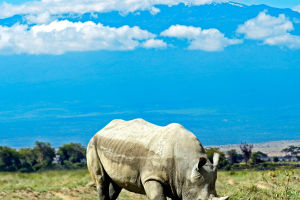Hi Lykkers! The oryx, with its striking appearance and resilient nature, stands as a majestic figure in the arid landscapes it inhabits.
This wild animal, often seen in the savannas and deserts of Africa and the Arabian Peninsula, is not only a marvel of adaptation but also a symbol of endurance and grace in some of the harshest environments on Earth.
Physical Characteristics and Habitat
The oryx is easily recognizable by its long, straight horns, which can measure up to several feet in length. These horns are not just for show; they serve as formidable weapons against predators. With a robust build and a coat that reflects sunlight, the oryx is perfectly adapted to its hot, arid habitat. Its pale coloration and distinct markings help it to deflect heat and blend into the light backgrounds of sandy deserts and grassy plains.
Diet and Water Conservation
One of the most fascinating aspects of the oryx is its ability to survive without water for extended periods. It can derive moisture from the food it consumes, which mainly consists of grasses, leaves, and fruits. This adaptation is crucial for survival in environments where water is scarce. The oryx's diet is supplemented by dew and the moisture from plants, enabling it to go weeks, sometimes months, without drinking water.
Social Structure and Behavior
Oryxes are social creatures that live in herds ranging from a few individuals to over a hundred. The herd structure is generally led by a dominant male, with females and their young forming the bulk of the group. This social arrangement helps protect members from predators and allows them to efficiently locate food and water sources. Herds are especially vigilant in the presence of predators such as lions and hyenas, with individuals taking turns to watch for danger while others rest or graze.
Conservation Status
Despite their adaptations and the vastness of their range, several species of oryx face threats from habitat loss and poaching. Their horns, prized as trophies and for traditional medicine, make them targets for illegal hunting. Conservation efforts include habitat protection, anti-poaching initiatives, and breeding programs both in the wild and in captivity to help stabilize and increase their populations.
Eco-Tourism and Awareness
Eco-tourism plays a vital role in oryx conservation by raising awareness about these animals and generating funds for conservation projects. Wildlife reserves and protected areas offer visitors the chance to observe oryxes in their natural settings, which not only educates the public about their plight but also highlights the importance of preserving these unique creatures and their habitats.
The oryx continues to inspire and captivate those fortunate enough to witness it in the wild. As a symbol of the desert's beauty and harsh realities, it serves as a reminder of nature's resilience and the ongoing need to protect our planet's incredible biodiversity.


